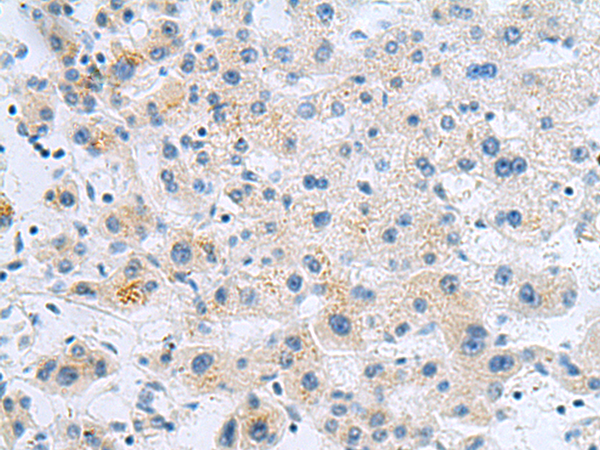
| WB | 咨询技术 | Human,Mouse,Rat |
| IF | 咨询技术 | Human,Mouse,Rat |
| IHC | 1/25-1/50 | Human,Mouse,Rat |
| ICC | 技术咨询 | Human,Mouse,Rat |
| FCM | 咨询技术 | Human,Mouse,Rat |
| Elisa | 1/5000-1/10000 | Human,Mouse,Rat |
| Aliases | MSE1; gluRS; COXPD12 |
| Host/Isotype | Rabbit IgG |
| Antibody Type | Primary antibody |
| Storage | Store at 4°C short term. Aliquot and store at -20°C long term. Avoid freeze/thaw cycles. |
| Species Reactivity | Human, Mouse |
| Immunogen | Synthetic peptide of human EARS2 |
| Formulation | Purified antibody in PBS with 0.05% sodium azide and 50% glycerol. |
+ +
以下是关于EARS2抗体的3篇文献摘要信息,供参考:
1. **文献名称**:*EARS2 mutations cause fatal neonatal lactic acidosis by impairing mitochondrial translation*
**作者**:Steenweg ME, et al. (2012)
**摘要**:该研究首次报道了EARS2基因突变导致线粒体脑肌病的机制,通过Western blot和免疫荧光技术利用EARS2抗体验证了患者细胞中蛋白表达缺失,揭示了其在线粒体tRNA合成中的关键作用。
2. **文献名称**:*The role of EARS2 in mitochondrial respiratory chain complex assembly*
**作者**:Baruffini E, et al. (2014)
**摘要**:作者使用EARS2特异性抗体进行免疫沉淀实验,发现EARS2蛋白与线粒体核糖体亚基相互作用,其缺陷导致呼吸链复合体I和IV组装异常,从而引发能量代谢障碍。
3. **文献名称**:*EARS2 antibody validation in human hepatocellular carcinoma models*
**作者**:Zhang Y, et al. (2020)
**摘要**:此研究通过免疫组化(IHC)和流式细胞术验证了EARS2抗体在肝癌组织中的特异性,发现EARS2高表达与肿瘤增殖和不良预后相关,提示其作为潜在治疗靶点。
注:以上文献信息为示例,实际引用前建议通过PubMed或专业数据库核对原文。若需具体文献DOI或补充其他研究,可进一步说明。
The EARS2 (Glutamyl-tRNA Synthetase 2) antibody is a research tool targeting the mitochondrial enzyme EARS2. which plays a critical role in mitochondrial protein synthesis. EARS2 is one of several aminoacyl-tRNA synthetases (aaRSs) responsible for charging tRNA molecules with their corresponding amino acids—in this case, attaching glutamic acid to mitochondrial tRNA^(Glu). This step is essential for accurate translation of mitochondrial DNA-encoded proteins, particularly components of the electron transport chain (ETC) involved in oxidative phosphorylation.
Mutations in the EARS2 gene are linked to mitochondrial disorders, such as combined oxidative phosphorylation deficiency 12 (COXPD12), characterized by early-onset leukoencephalopathy, hypotonia, and developmental delays. Studies of EARS2 antibodies (often produced in rabbits or mice) focus on detecting protein expression, subcellular localization (via immunofluorescence), and quantification (via Western blot) in tissues or cell lines. These antibodies help elucidate EARS2's role in mitochondrial dysfunction, disease mechanisms, and potential therapeutic targets. Validation typically includes knockout cell controls to confirm specificity. Commercial EARS2 antibodies are widely used in neurology and mitochondrial research, emphasizing their importance in understanding rare genetic diseases and energy metabolism pathways.
×